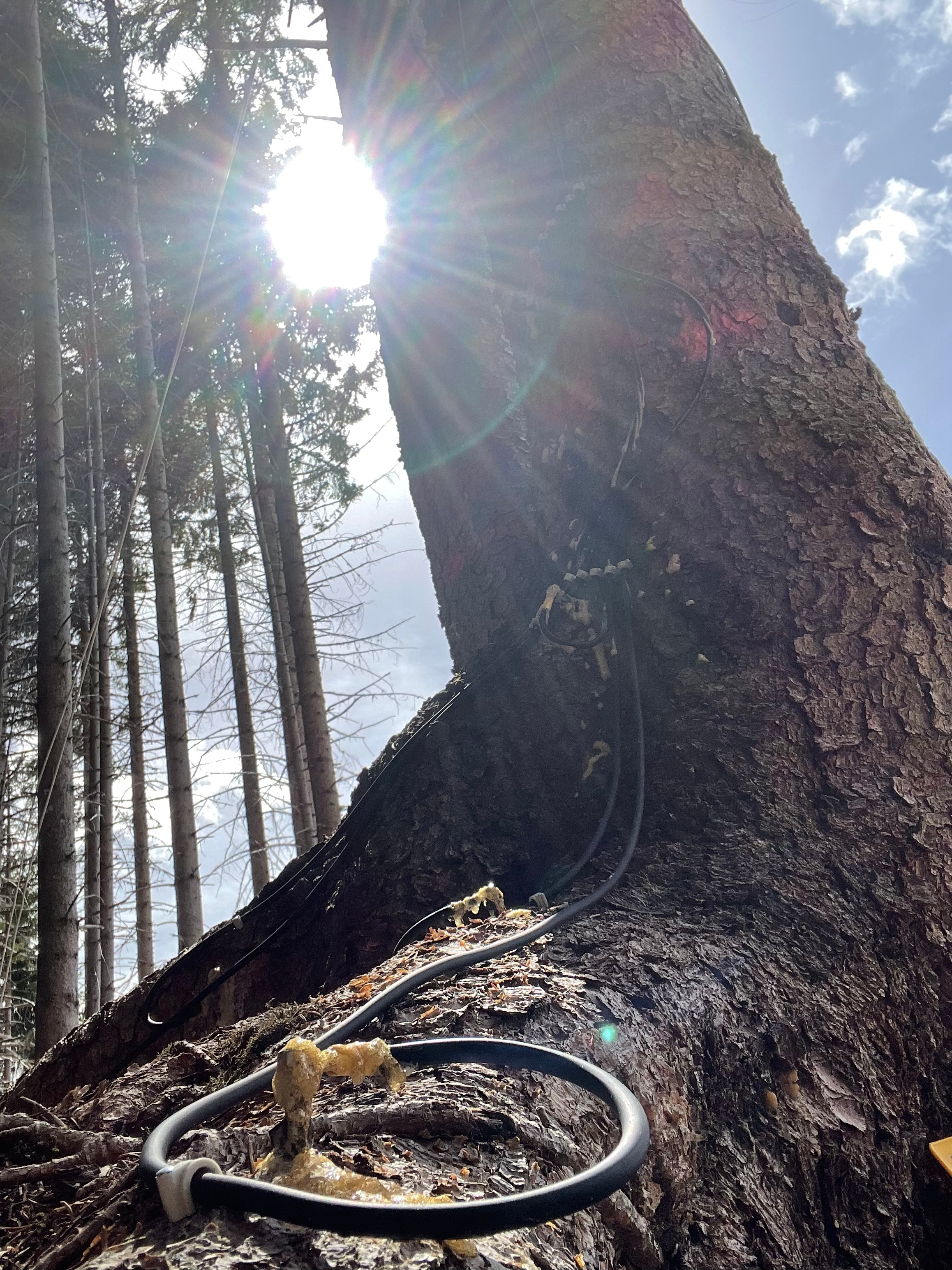A team of scientists have measured electrical activity in a spruce forest during a partial solar eclipse. They report that signals within and between trees appear to synchronize in the course of the eclipse, indicating communication and probably cooperation under these unusual circumstances. If true, this would force a complete re-evaluation of how we see plants, both individually and collectively. It would demonstrate a level of interaction and what might be called awareness among them far beyond anything accepted. Claims this far outside the box will need to be seen many more times to convince most scientists.
The idea that trees cooperate and communicate, including through the mycelium network, has grabbed popular attention in recent years, and been given the nickname the “Wood Wide Web.” Although not on the scale of the planet-circling network of Pandora in the Avatar films, the idea has a similar appeal. In a time when humanity is laying waste to forests (and other ecosystems) worldwide, many people want to believe trees show a different way.
A team combining evolutionary ecologists and physicists saw the solar eclipse of October 2022 as an opportunity to test how trees respond to unusual conditions. The eclipse was not total from anywhere on Earth, and only about a quarter of the Sun was covered from the test location in northern Italy. Nevertheless, that is enough to significantly reduce the sunlight reaching the trees.
The authors attached sensors to three spruce trees of different ages to track electrical activity as ions cross the trees’ cells’ membranes.
The authors report electrical signals between the trees increased during the eclipse, as they were talking and activity between different trees became significantly more synchronized. They compare this to animals huddling together in response.
“This study illustrates the anticipatory and synchronized responses we observed are key to understanding how forests communicate and adapt, revealing a new layer of complexity in plant behavior,” said Professor Monica Gagliano of Southern Cross University in a statement. “Basically, we are watching the famous ‘wood wide web’ in action!”
“We have uncovered a deeper, previously unrecognized dynamic synchronization not based on matter exchanges among trees,” said Professor Alessandro Chiolerio of the Italian Institute of Technology. “We now see the forest not as a mere collection of individuals, but as an orchestra of phase correlated plants.”
These alone represent remarkable claims about plants’ interdependence. Yet the authors claim the synchronization started prior to the eclipse, and interpret this as a sort of pre-awareness, which would require a vastly greater break with current understanding.
The change in signaling appeared among older trees first, which the authors interpret as being because these trees would have experienced solar eclipses before, and therefore been primed to respond.
“This discovery underscores the critical importance of protecting older forests, which serve as pillars of ecosystem resilience by preserving and transmitting invaluable ecological knowledge,” Gagliano said. In a video Gagliano added, “It reinforces the idea that older trees cannot simply be replaced by replanting but they need to be protected, because they hold ancestral memories that allow for resilience and adaptation in a state of climatic change.”
There are many reasons why the preservation of older trees (which are frequently also larger) is considered a conservation priority, but whether this one can be added remains to be seen.
Wires connecting sensors the team attached to multiple points on the study trees, as well as between them.
Image credit: Monica Gagliano/Southern Cross University
Science certainly underestimated animals’ intelligence for a long time, and scientists who challenged this were often treated with contempt. Perhaps the same is occurring for plants (and fungi).
On the other hand, it’s not clear why an eclipse should affect trees so strongly that they would retain a memory decades later – the loss of light from a partial eclipse like this would not be very different from cloud cover. Even harder to explain is how the trees could have started responding even before the eclipse was underway.
Gagliano received some very hostile responses to her previous claims that pea plants develop a sort of Pavlovian response, associating air flow from a fan with light from a particular direction. Yet a mechanism for this much easier to imagine, and would be far less challenging to multiple fields of science than the conclusions from this paper.
The study is published open access in Royal Society Open Science.
A trailer (in Italian) has been released for a forthcoming documentary about research into the resilience of the forest in the study.
Source Link: Trees Reported To Align Their Electrical Signals During A Solar Eclipse As If Cooperating
